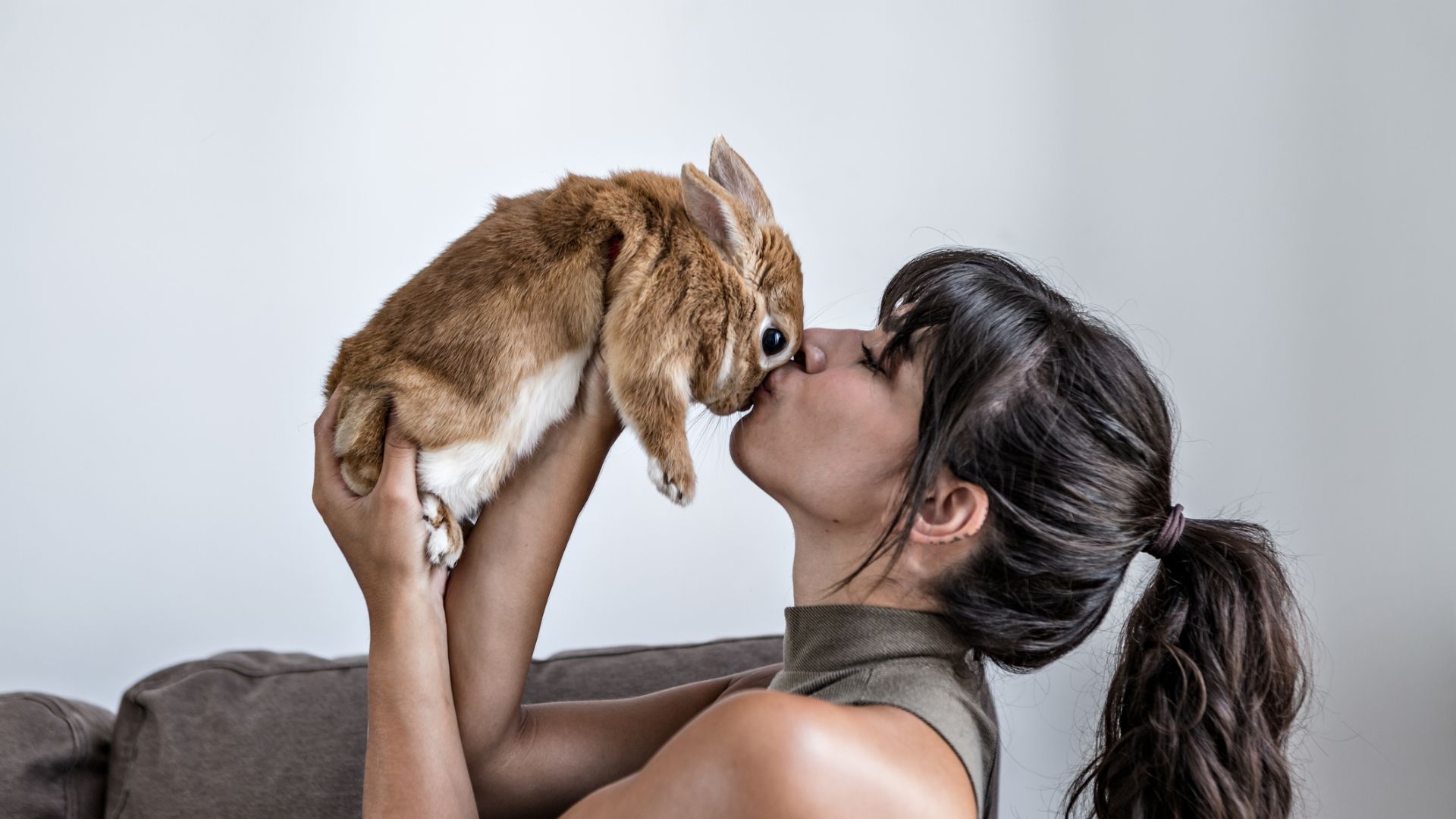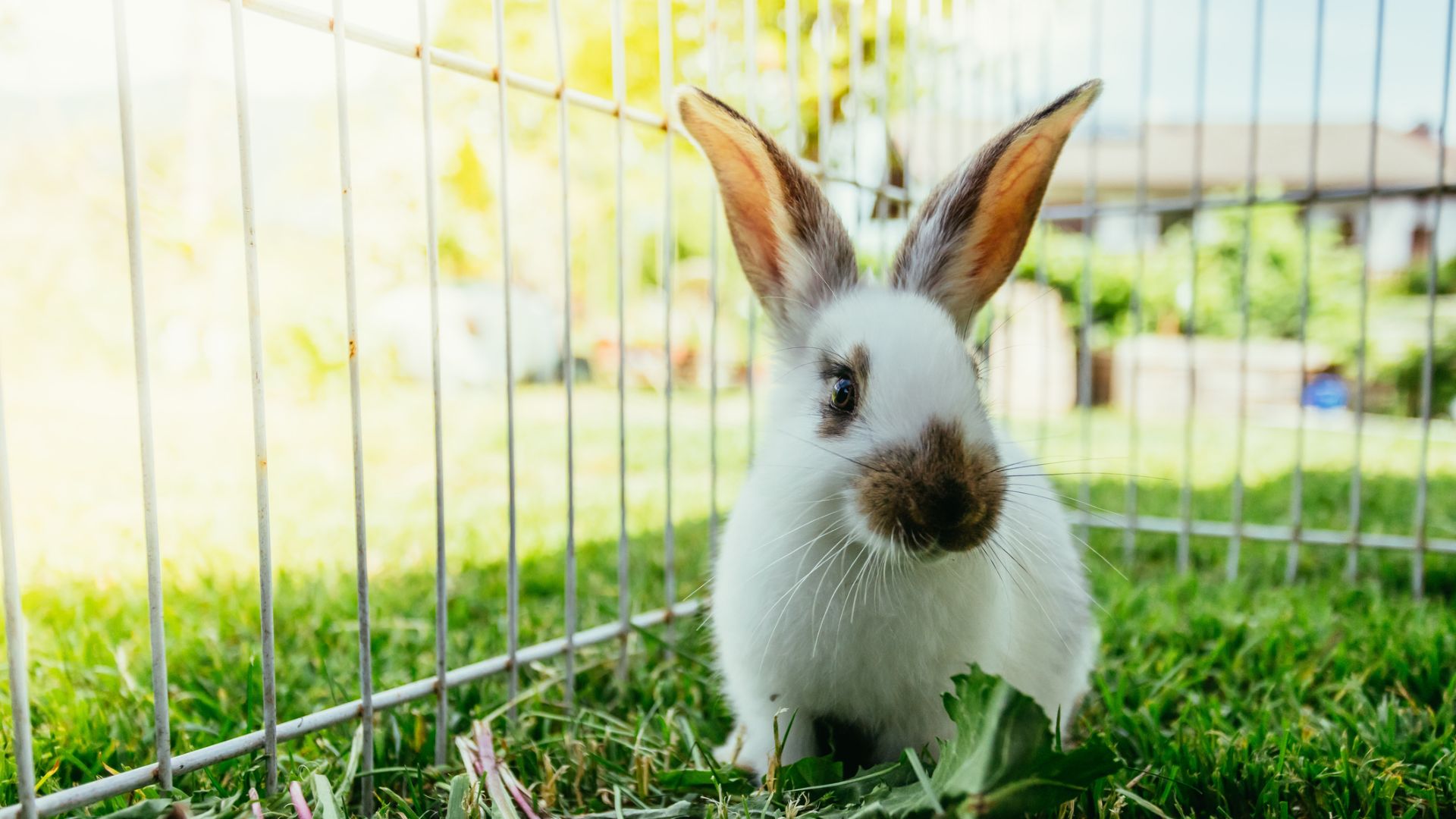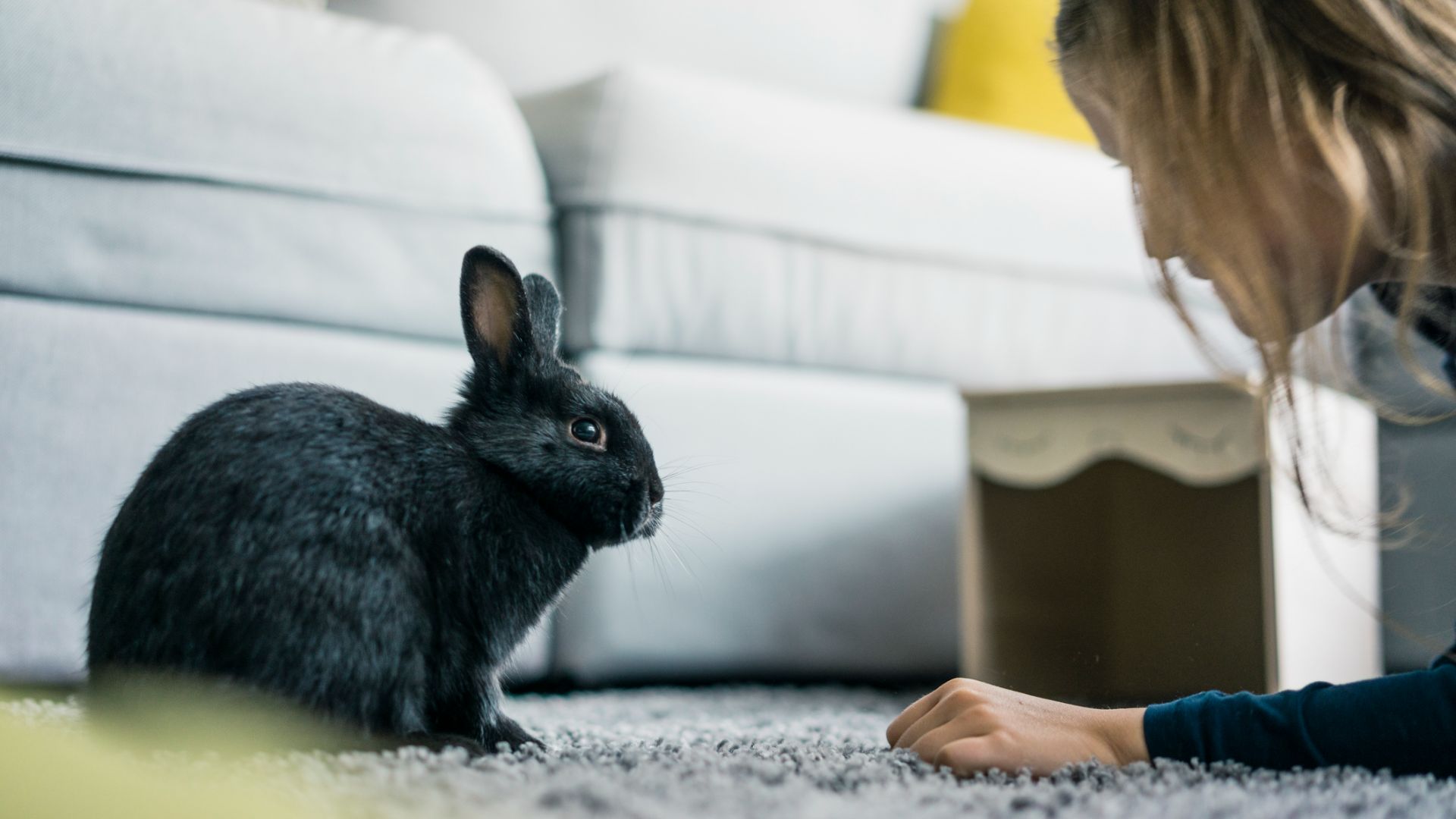
Those who have rabbits as pets can attest to how intelligent and characterful they are. This does mean that they need a suitable amount of entertainment to avoid becoming bored or depressed – cue our activities for rabbits.
There are some things that you can do with your rabbit, such taking them for a walk, and others that you can set up for them to do themselves, such as foraging or some of the best rabbit toys. If you're not sure how to play with your rabbit, here are 32 activities for rabbits you can try to keep them happy.
32 activities to do with your rabbit
1. Harness walking

Some rabbits don't cooperate, but most can be trained to walk on one of the best rabbit harnesses. This allows them to safely explore their surroundings under your supervision and means that they can roam much further and investigate places where they might otherwise get lost.
2. Watch TV

While your rabbit probably isn't actually watching the TV, they will probably appreciate some quiet hang-out time with you. If you bring them out and put them on your lap or beside you while you watch the television, it can become a sweet activity you share.
3. Explore

One thing that rabbit owners can relate to is how much rabbits like to explore, so give them lots of enriching features in their enclosure to investigate. This can be tunnels, places to hide, toys, or different plants to try.
4. Play

Once your bunny is comfortable with you, they will probably enjoy playing. If you are careful, and gentle and read their body language, you can initiate play with your rabbit or allow them to initiate with you. You can play with toys or play hide and seek.
5. Chewing

While you might not enjoy this one as much as your pet, make sure they have lots of material (such as the best hay for rabbits) to chew. Rabbit teeth grow throughout their lives, so they need to keep chewing hard objects to keep them at a comfortable length. If they are not provided items to chew, it's likely that they will chew on things you don't want them to, such as power cables and furniture.
Get the best advice, tips and top tech for your beloved Pets
6. Nesting

Make sure your rabbit has lots of materials to create a nest and a suitable space for nesting in. Lots of the best bedding for rabbits, such as straw, sawdust, hay, or shredded paper will allow your bunny to express their natural instinct to build nests. Just make sure you clean them out regularly and replace them with clean, fresh bedding.
7. Foraging

Rabbits are natural foragers, and you can satisfy this instinct by giving them things to forage. Hiding edible flowers or small pieces of apple or berries in some hay will encourage your rabbit to forage for the high-value items.
8. Digging

Female rabbits are more likely to dig than males, building huge warren structures when left unchecked. Boys dig too, but for different reasons. These warrens serve as a safe and cozy place to raise their families.
While you don't want your rabbit digging their way out of a secure area, setting aside some space for them to construct their burrows will keep them satisfied.
9. Handling

Rabbits that enjoy handling are likely to find it a fulfilling experience and a pleasant way to bond with their human. Respect their boundaries and make sure you give them space when they want it, and they should be happy to be handled regularly, perhaps even seeking you out for cuddles.
10. Grooming

Rabbits are very clean creatures and have a strict self-grooming routine. You can help them with this by grooming hard-to-reach areas with a soft brush (check out our guide to the best rabbit brushes) and checking their teeth and nails regularly to ensure they aren't overgrown. A bath will stress your rabbit out so this is best avoided – so here’s a guide to rabbit grooming to help you get started.
11. Socializing

Rabbits are social creatures and enjoy having a friend to live with. While some struggle with socialization, most rabbits will enjoy having a pal around to keep them company.
12. Grazing

If you have an indoor bun, make sure they have plenty of things to graze on. Unlimited access to hay is important, but if you can give them time outdoors to graze on fresh grass, this will keep them content.
13. Exercise

Exercise for rabbits may not look quite the same as it does for a dog but is still important for their well-being. Time out of their enclosure to roam, explore, and graze is important for their physical and mental wellbeing.
14. Let them roam

Rabbits are natural explorers, so letting them roam (with supervision) is good for their mental health and can help them to feel safer in their environment.
Rabbits need plenty of space – more than you might think – this guide explains how much space rabbits really need.
15. Homemade toys

You can make your rabbit toys out of edible materials to add some enrichment to their enclosure. String some low-calorie vegetables together and hand them in your bunny's enclosure, and they will be kept happy for hours.
16. Give them a tunnel

Bunnies like tunnels, which is why they tend to dig them. If you have a rabbit that lives fully indoors, this can be difficult as they might not have the space or materials to dig. In this case, you can give them cardboard tubes or hollow logs to hide in.
17. Train them to do tricks

Rabbits are very easy to train, and you can show them how to do tricks. With a suitable, high-value reward, your bunny can learn to give kisses, come when called, or give a high five. Try to do training when your rabbit is most alert.
18. Rotate their toys

Rabbits can get bored, so rotate their toys to keep things interesting for them. You don't need to buy them new toys every time, but swapping some of them around a few times a month can keep things interesting for your bunny.
19. Give them a platform

Rabbits like investigating platforms and high places, which is why you will often find them hopping up onto a sofa. Their natural instinct to scan for predators means that high places are appealing to them, and you can encourage this instinct by building them a small platform.
20. Keep their routine consistent

Rabbits feel secure within a routine, so if you feed, exercise, and handle them at the same time each day, they will feel safest. If you mix up their routine, this is likely to stress them out, so try to keep things consistent and predictable for them.
21. Don't overcrowd their space

While this isn't an activity per se, be aware that you can overcrowd rabbits with toys, tunnels, and things to chew, which can be stressful for them. Make sure they have lots of space, swap toys instead of just adding more and give them a safe place to hide if they feel overwhelmed.
22. Spend one-on-one time with each rabbit

If you have multiple rabbits, handling them individually can help reinforce your bond with them. Try to avoid separating them completely or taking one rabbit out of sight of the other, as rabbits can experience separation anxiety, particularly with their friends. Focus on petting one rabbit while you give the others an activity to do.
23. Introduce new items slowly

Rabbits are prey animals, and new things can be scary for them. With this in mind, introduce new things slowly. Don't bombard your rabbit with lots of new toys and enrichment items at once, but introduce each one gradually to allow them to adjust.
24. Give them an untreated log

Rabbits should be encouraged to chew and an untreated log is the perfect gift for them to work their teeth on. Make sure there are no chemicals, paint, varnish, or pesticides present before giving to your bunny, as these may make them sick.
25. Find edible weeds for them to eat

While this isn't an activity you'd do with your bunny, you can go for a walk on your own to find them edible plants. Dandelion greens harvested from a clean place are likely to go down very well with your rabbit.
To help you out, here’s a list of things rabbits can eat, and here’s a list of plants poisonous to rabbits.
26. Make a trail of greens

Make your rabbit a trail to follow and engage its foraging instinct. Placing some greens a few inches apart will encourage your rabbit to use its senses to find the next one on the trail, which can be fun and fulfilling for both of you.
27. Play on their level

You're probably a lot taller than your bunny and this can feel intimidating to them. If you get on the ground with them, they are more likely to feel safe and enjoy interacting with you.
28. Assault course

Rabbits in their natural environment cover all sorts of terrain, so adding a bit of variety to their environment can be enriching. Give them things to climb, hop over, or scooch under in a mini rabbit-friendly assault cause.
29. Ball games

Rabbits can be trained to play with balls and some really enjoy it. If you show your bunny how to push the ball along the ground, you may find them using their nose to nudge it along. If the ball has a bell inside, your rabbit may enjoy the noise this makes as well as the action of pushing the ball.
30. Puzzle games

You can make rabbit-friendly puzzle games that encourage their foraging instinct. Using untreated wood or cardboard, make a simple puzzle for your rabbit to solve in order to get to the food. This will provide them with mental stimulation and a tasty treat at the end of it. If you're really bored, you can build a whole maze with carboard boxes.
31. Litter training

If you have a rabbit you'll want to read up on how to litter box train a rabbit. You'll be happy to know that they are quite easy to litter train and once it's done, are unlikely to forget where the bathroom is. While this is more of a practical activity than a fun one, ensuring you reward your rabbit makes it worth it for them. They're also naturally clean animals and when neutered, prefer to go in one place.
32. Take a nap

The biggest blessing as a bunny owner is when your rabbit sees fit to fall asleep while being petted. While it isn't a very active activity, knowing that your rabbit feels safe enough to have a sleep on your lap is a high compliment.
Lou is an experienced writer and keen dog lover who works at PetRadar's sister site, LiveScience. When Lou isn't covering health and fitness, she's busy spending time with her family dogs or growing all kinds of veggies and flowers on her allotment.
